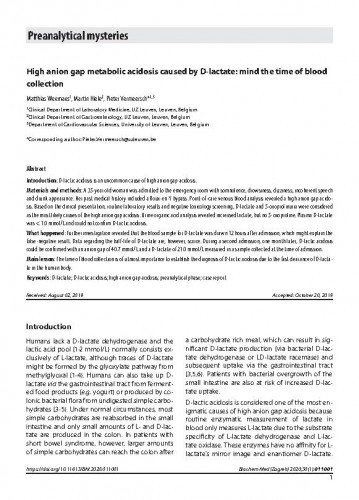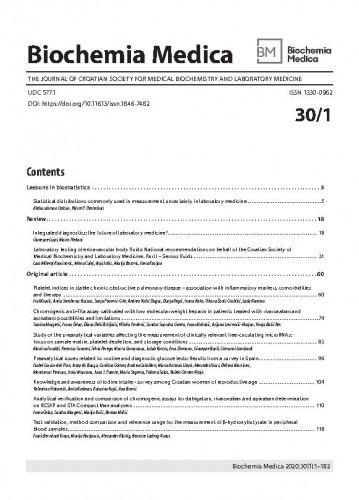Introduction: D-lactic acidosis is an uncommon cause of high anion gap acidosis.Materials and methods: A 35-year old woman was admitted to the emergency room with somnolence, drowsiness, dizziness, incoherent speechand drunk appearance. Her past medical history included a Roux-en-Y bypass. Point-of-care venous blood analysis revealed a high anion gap acidosis.Based on the clinical presentation, routine laboratory results and negative toxicology screening, D-lactate and 5-oxoprolinuria were consideredas the most likely causes of the high anion gap acidosis. Urine organic acid analysis revealed increased lactate, but no 5-oxoproline. Plasma D-lactatewas <1.0 mmol/L and could not confirm D-lactic acidosis.What happened: Further investigation revealed that the blood sample for D-lactate was drawn 12 hours after admission, which might explain thefalse-negative result. Data regarding the half-life of D-lactate are, however, scarce. During a second admission, one month later, D-lactic acidosiscould be confirmed with an anion gap of 40.7 mmol/L and a D-lactate of 21.0 mmol/L measured in a sample collected at the time of admission.Main lesson: The time of blood collection is of utmost importance to establish the diagnosis of D-lactic acidosis due to the fast clearance of D-lactatein the human body.
Sažetak

 Biochemia medica : the journal of Croatian Society for Medical Biochemistry and Laboratory Medicine : 30,1(2020) / glavna i odgovorna urednica Daria Pašalić.
Biochemia medica : the journal of Croatian Society for Medical Biochemistry and Laboratory Medicine : 30,1(2020) / glavna i odgovorna urednica Daria Pašalić.